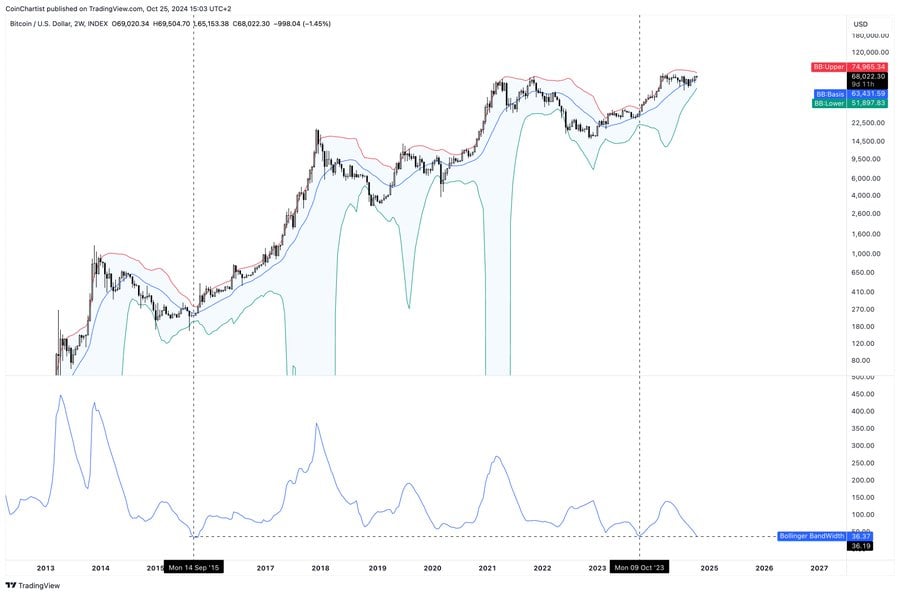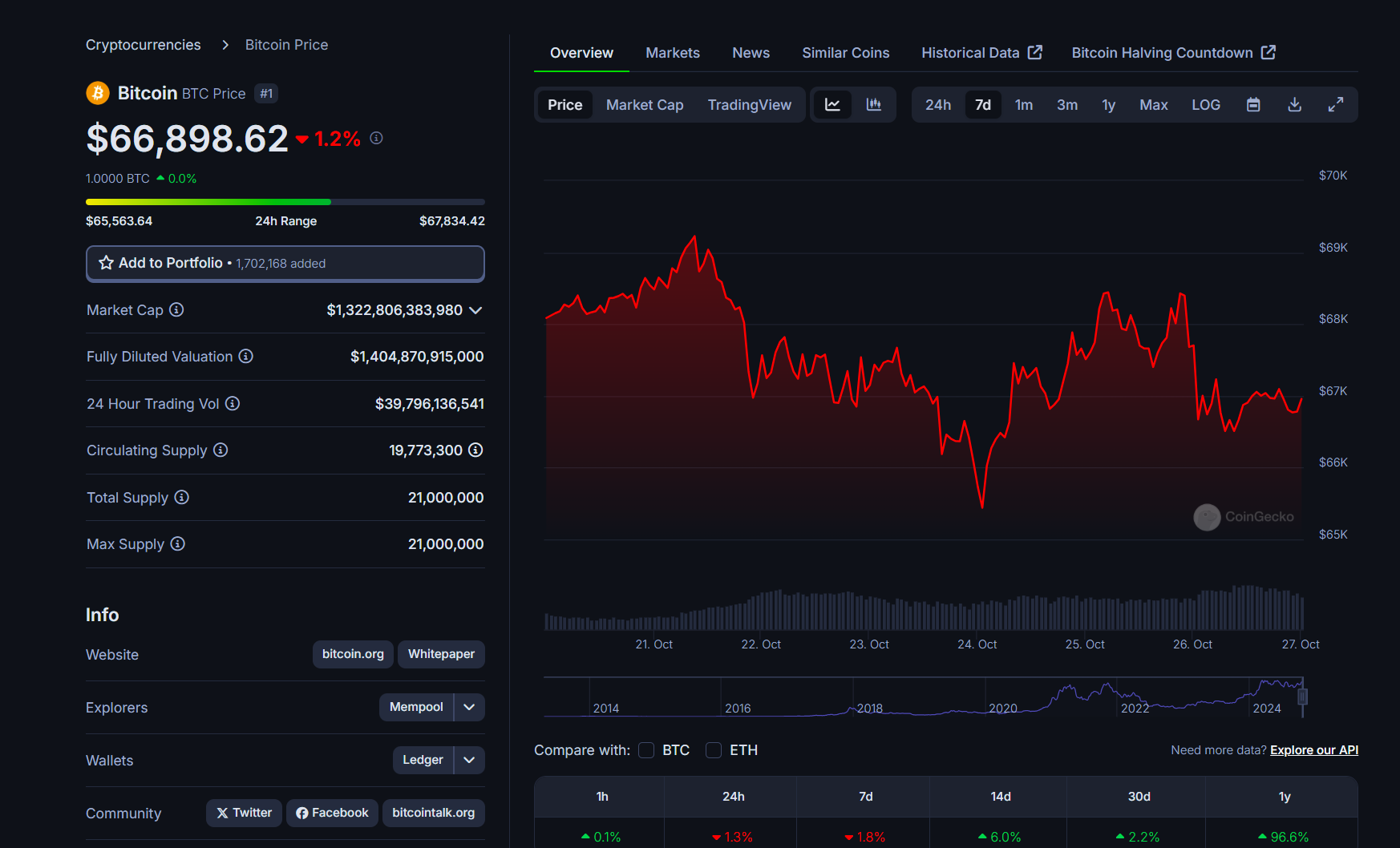Key takeaways
- Bitcoin’s Bollinger Bands are at historically tight levels, indicating a likely major market move.
- Past tight Bollinger Band periods have preceded significant bull runs.
Share this article
Bitcoin is poised for a major price movement as its Bollinger Bands feature one of the tightest formations in history. When the bands are at their tightest level, often referred to as the Bollinger Squeeze, this indicates a period of low volatility, potentially setting the stage for a strong price breakout.
“A big step forward is coming,” tech analyst Tony Severino said in a recent article. He noted that Bitcoin’s Bollinger Bands, an indicator used to gauge price volatility and determine trend direction, are “among the three tightest instances in history” over a 2-week period.


Historically, this contraction has led to substantial price changes for Bitcoin.
A similar trend was seen in April 2016, when the Bollinger Bands tightened significantly for the first time. After this period, Bitcoin prices began to increase significantly over the following months, marking the start of an uptrend.
Another critical case occurred in July 2023, where Bollinger Bands reached extreme tension again. As in April 2016, this tightening preceded a sharp rise in prices.
Although tightening bands signal the potential for significant movement, it does not predict the direction of that movement. The result could be either a major uptrend or a severe downturn. For example, a similar trend observed in 2018 led to a sharp drop in the price of Bitcoin.
Historical data shows that Bitcoin has rebounded from narrowband conditions seven out of nine times.
Bitcoin whales are accumulating coins at a historic rate
As Crypto Briefing previously reported, Bitcoin whales amassed 670,000 BTC, the largest number of whales ever recorded. This huge accumulation has always been followed by significant price increases.
While whale accumulation is a positive sign, the current sideways trend suggests that a major price move may not be imminent. If Bitcoin fails to reach new highs by the end of November, it could indicate challenges in the ongoing bull cycle.
Bitcoin recently fell below $65,500 following reports of a criminal investigation into Tether, the world’s largest stablecoin.


The Wall Street Journal, which broke the news, said federal prosecutors in Manhattan were investigating Tether’s involvement in facilitating drug trafficking, terrorism financing and hacking activities.
Tether has strongly denied all allegations. Tether CEO Paolo Ardoino called the accusations “unequivocally false” and criticized the report for publishing what he described as “old noise.”
The escalation of tensions in the Middle East, particularly between Israel and Iran, also contributed to market volatility. On October 26, Israel announced direct strikes against Iran in retaliation for a massive barrage of missiles launched by Iran on October 1.
The price of Bitcoin is vulnerable to geopolitical unrest, often experiencing rapid declines followed by periods of consolidation or recovery. At the time of writing, Bitcoin was trading at around $66,800, down 1.3% in the last 24 hours, according to CoinGecko.
Share this article

